What is the veil? Women's outerwear in Muslim countries
Muslim religious Arab women instructed to hide the entire body, except for hands and face. Depending on the region and the existing historical and cultural tradition, there are different kinds of hijab (ideologically correct attire). This is all possible variations of the veil, veil, the Himarë and m. P.
Types of women's outerwear in Islamic countries
Hijab Arabs call any woman's clothes, the relevant rules of Sharia. The translation can call it curtain or veil. In Western society, mention the hijab, referring to the traditional headscarf Muslim woman.
What is the abaya? So called traditional Arab dress cut, long and loose, worn without a belt. Put his women, going to a public place. In some Arab countries wear abaya is mandatory for a Muslim woman.
On the head of a Muslim woman wearing a cape, called Himare. It may have a different length, a style, a different look. In Europe, Muslim women wear a khimar headscarf as the most "gentle" form of hijab.
The word "veil" heard, probably all. But not everyone imagines exactly how it looks. In this case we are talking about a light veil of black, blue or white, the closing figure completely with his head. Sometimes the upper part is complemented by a small piece of fabric, whose mission - to close a woman's face. The veil refers to the traditional Iranian version of Islamic women clothing.
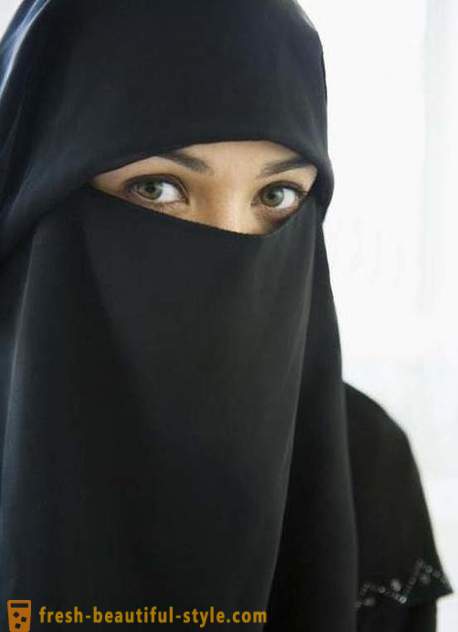
What is the niqab? This term is derived from the Arabic word "mask". So that's a hat, for which a person and a woman's hair is completely hidden (except for a narrow slit for the eyes). Color it is usually black, sometimes supplemented by something like a veil. As the hijab, the clothing item exists in a large number of variants and combinations with other elements of the costume.
Bourke is called the veil that wraps the body completely with the head. At the burqa has a slit for the eyes, guard mesh. Most often it is blue, sewn from inexpensive material and is almost always mandatory for the majority of the Afghan and Pakistani women. Burqa, burqa, niqab, abaya - all the individual elements of the hijab. Al Amir called khimar in its modern version. This is a small cotton cap, on top of which was tied a scarf, sometimes it is replaced by a pipe of the same fabric.
Another long scarf rectangular shape, which is usually wrapped around the head, named Sheila. Its ends are hidden or freely hanging along the shoulder. Sheila can be considered as one of the most democratic option Himare.
In addition to the top of women's clothing, there is a bathing suit, a style which does not contradict the requirements of the Shariah. It was he who burkini. Cut it a bit like pajamas. Whole body their safe havens except for the hands, feet and face. For the head as part of the swimsuit provides a tight-fitting hood. Burkina may exist in another form - for sporting activities.
Well, that is the veil? It is equipped with a so-called false sleeves long and voluminous gown. Similarly, the veil completely covers the body, has a slit for the eyes, which is usually close chachvanom - a dense grid of rectangular shape. This garment's name comes from the Persian "Faradji".
Her appointment
Why wear a burqa? The original meaning of clothing, completely hiding the body together with the person - in the protection of women from view and the evil eye. I wore it all - from small to large. And a married woman, and the woman in a burqa can feel protected, leaving the house.
A resident of the Sudan and Saudi Arabia, had violated the right of permanent hijab (regardless of religion), threatened with imprisonment. In Iran, more loyal to the emergence of open-faced people, but the veil was still required.
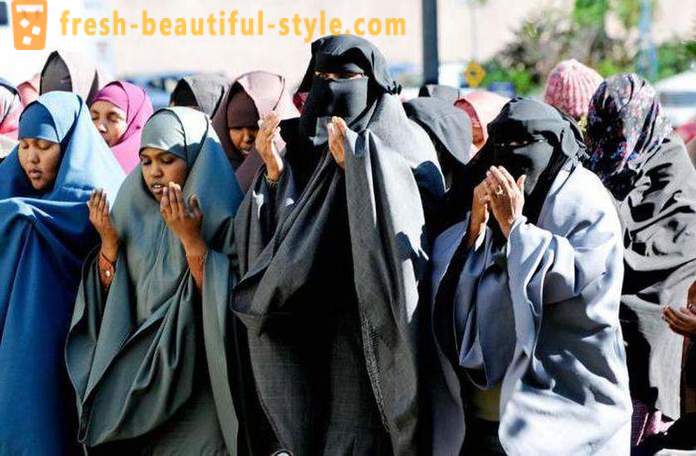
A resident of the United Arab Emirates also ordered to comply with all the traditional rules of the Islamic religion. However, in recent years, the country was flooded with tourists from western countries in a very skimpy clothes. Modern woman in a burqa - an increasingly rare phenomenon even in the East. Ironically, in some countries wear the hijab is prohibited in some cases. For example, in Turkey, this refers to the female students, schoolgirls and female employees, civil servants. Sometimes it causes resentment on the part of Arab women, to defend their own right to the cultural tradition of wearing hijab.
How did the veil
This women's head cover has always been great interest in the world. Ignorant Europeans and Russians strive to name any burqa cloak for the head, which covers the face of Islamic women. But the hijab and the burqa is not the same thing. Ethnographers conducted research related to the history of the different parts of the eastern costume.
At the turn of XIX-XX centuries among the population of Central Asia veil it was widespread. In the twenties and thirties of last century, the Soviet power in Central Asia actively eradicated the vestiges of Islam and women's veil was practically put out of use. This traditional costume element declared a symbol of eastern slavery.
Subsequently, the veil had only ceremonial functions. It appeared the bride at weddings and went to the house of her husband. Perhaps this piece suit forever be a thing of the past. But the process of separation of the Central Asian republics to return to the norms of the Muslim religion gave impetus to return to life the traditional clothing items not only as a ceremonial costume, but also for its intended purpose. Women began again to hide the figure and face, going beyond the house.
Today's Russians are mostly seen Arab burqa only in the famous film "White Sun of the Desert". One is sure that he knows what it is. But a correct idea of this dress is available only in units.
Head of Islamic women's capes
So popular in Muslim countries, bedspreads, throw on the heads of women to conceal the full figure, have different origins. Some of them - the descendants of a large shawl (for example, the Persian veil). Others are derived from coat thrown over his head with the collar. This kind of capes for the head is most common among women living in Central Asia. That is, the Central Asian veil sometimes looks quite different, as head cape women in other eastern countries. In Persia, the veil is two handkerchief or a large one. But to completely hide the female figure they did not succeed, and the veil has been supplemented by special trousers for streets that house to put on was not accepted.
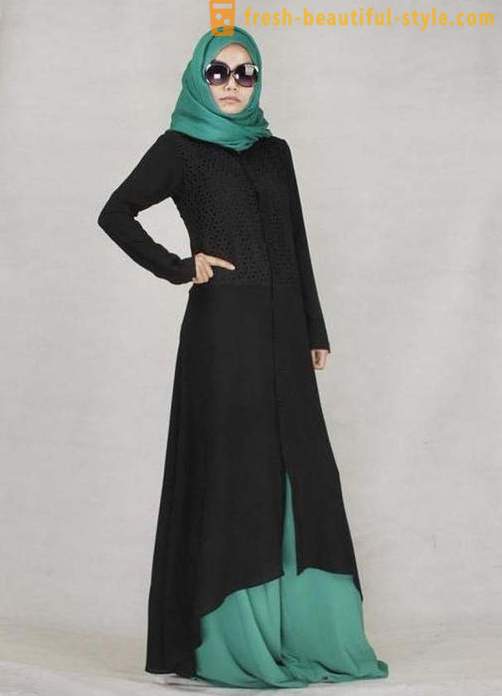
Afghan burqa, otherwise referred to as chatri is round-shaped cap, fits the head tightly enough with sewn in the form of assembly of a large semi-circular shape with a handkerchief - a sort of a kind of cloak. Its dimensions are sufficient to ensure that a woman could be wrapped up from head to toe. Chatri (or the Afghan burqa) complete street trousers. They decided to fill dress.
Despite the differences in appearance between the Persian and the Afghan burqa species shares many design features. Outdoor clothing Central Asian residents (for example, Uzbeks and Tajik women) differs from them strongly enough. This is due to the fact that those areas have long been conducted irrigated agriculture and sedentary culture was developed. In the cities, residents of the greater part of the image were hermits life.
Where does it come from
The origin of the Central Asian burqa has become a swing shoulder wear, which appeared gate to wear on his head. Bathrobe, which is usually throw on the head in Central Asia, consists of a myriad of options. Wearing it on the head, as usual, on the shoulders with sleeves, in a burqa, it serves only a cape.
If robe jumped on the head, but do not wear sleeves in the shape of its deformed. The sleeves are usually leans back. They can be fastened behind his back or just narrow.
Despite all the changes taking place in the cut of the gowns capes easily discern the contours of the swing tunic garment with all the features inherent in it. In this case it is a long narrow sleeves paranja sewn transversely of the cut fabric pieces. Similarly, there is the usual robe and collar in some versions - vertical pockets at the seams. Gradually, pockets turned into a decorative element. They began magnificently finish, through-holes in them could be used for threading hands.
Who wore it
The veil can be considered the most complete and perfect form of head cover. Special distribution was received by it in Tajikistan and Uzbekistan. Veil refers to the typical urban variety. It can not be found in the daily version of a woman from a mountain village.
Before the shoulder of the garment formed capes, the women came out of the house, putting on head plain robe (own son or husband). The veil in the classical form was extended towards the end of the XIX century. Gradually, she gained the status of a mandatory species off women's clothing. In each region formed its traditional features, is strictly regulated by local cultural traditions.
The process of the emergence and consolidation of the burqa in everyday costume lasted long. The exact date of the beginning can not be determined, as he continued in parallel in different areas and in 4 different nations. The term "Faradji", which was the name of the veil, is of Arabic origin and refers to the Persian language "dress".
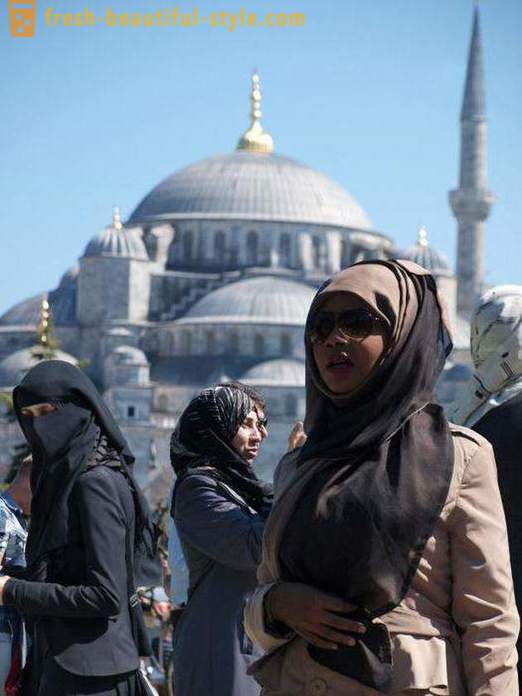
How do I look Faradji
Initially, it was a wide upper men's clothing, which has often long sleeves. References to the closing figure to toe robe with wide sleeves, decorated with embroidery and precious stones are found in the sources of the past centuries since the IX century. Faradji originated in Egypt and then became widespread in other Eastern countries.
In the Middle Ages it served as the clothes of scientists, as well as the clergy and government officials. They wore Faradji and women, in particular the residents of Istanbul. And in the XVI-XVIII centuries it was used as an outer garment, adding a scarf or a veil covering the face white. Later the term "Faradji" can be found in written to the output value of the front gown. In feudal times it was transformed while retaining its ancient foundation. Long sleeves uncomfortable turned into decorative details, and starting from the XVIII century completely lost practical meaning.
Purpose of said clothing (the burqa) - to hide from prying eyes of a woman according to the norms of Islam - was confirmed in the late feudalism.
On the men's and women's clothes
Why do women pounce on the head is male robe? The fact that a separate outer clothing for them did not exist. The initial cut of the robe was the same for both women and men. According to the point of view of individual researchers, from the nomadic peoples clothing for people of both sexes were similar. Its division began approximately in the XII century.
Not every ethnic group of Central Asian peoples was made to wear a veil. Some of them - Kyrgyz, Turkmen, Kazakh, Karakalpak - not practiced the custom of female seclusion and the veil that is they did not know. "Overalls" for covering women's faces they did not exist. In its entirety this custom has been developed only in the cities and large villages.
In rural areas, the burqa has been the privilege of the women from the most affluent families, and in exceptional cases.
The nomadic tribes headdress women was more practical. Most often obliged nomads head scarves or normal tissue. From these dressings occurred turban turban.
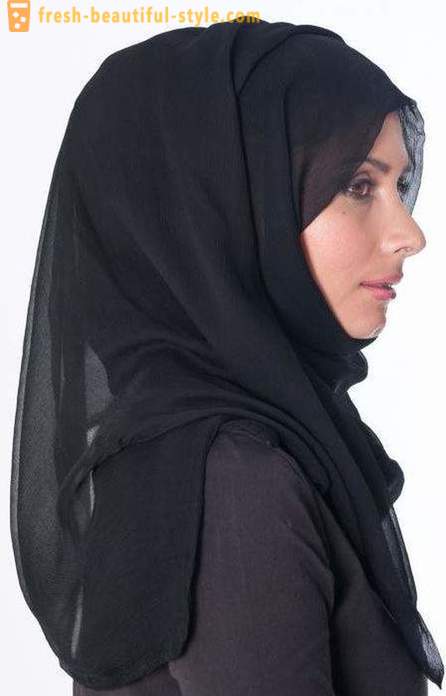
What is the veil?
As already mentioned, it is very wide and long robe, having the same length of the narrow false sleeves, called "sochvok", which was accepted leans back and fastened together by ribbons. Woman throws it on top of her head shawl or skullcap (depending on age). Her face was covered with the rectangular grid of black horsehair - a kind of front curtain. Its density is sufficient to ensure that the woman's face was hidden, but at the same time she could see the world around her. Mentioning that oriental woman face closed veil is not quite accurate. Appointment of the burqa - to hide the female figure. Her face is closed chachvanom. The error is due to the fact that the Central Asian woman costume far from the intricacies of cut hard for people to understand what the veil, and to share it with chachvanom. They take everything as a whole. Sometimes chachvan, ie covering the face of the grid, just call the veil.
The cut of the burqa despite its external dissimilarity to other types of clothing, enough classic and in practice does not differ from the usual cut gown. Because direct fabric piece sewn to the back rest and, at the shoulder line which is stitched to the sleeves, lower - sidewall. Hoses for the Central Asian traditional clothes sewn from fabric cross-pieces joined at the edge.
Do they are usually very narrow and long. When worn they are not used, and, as mentioned above, throws behind.
Features cut
Compulsory membership of the burqa - the collar of the same cut as that of the coat. Also lining necessarily present in the lower part - well-dressed, with the colorful fabrics. To arm the veil, commonly called the tail, flat on his back, they used to be stretched lengthwise and fastened together at the bottom. Place bonding sheathe ornaments of braid strips or velvet with silk fringe and metallic sequins. Sometimes there woven beads, sometimes ornaments made of gold-embroidered rosettes or brocade pieces.
At the level of the chin in the burqa had ties or fasteners, whose purpose - to hold a veil on her head. Under the chin he had loops and buttons for closure. Appeared only in the early twentieth century, buttons were either pearl or silver.
The veil was adorned with rich women sewed along the gate flat silver buckles. Board and its floors were trimmed with braid, woven or embroidered cross. In some areas, the veil had decorative pockets, trimmed with elegant lace with patterns and tassels at the ends.

How it was created
This type of clothing like the burqa, it was not accepted to sew at home. Produced their professional seamstress who worked under orders. According to the fishery traditionally engaged in the entire female half of the family - from mother to daughter in law and daughters.
I paid for such work well. Stitched veil decorated with handmade embroidery, called for at least two months of hard work. Zakazchitsa masters and gifts to thank offerings.
For bulk sale at markets products sewed not so carefully, at times using machine embroidery. This veil was possible to make only a few days. As zakazchitsa gifts brought sweets, dried fruits, cakes, muslin shawls or a piece of fabric for dresses. In gratitude for the sewing of the veil for the bride forewoman usually invited to the wedding.
The first veil sewed a girl reaches the age of nine. When issuing marriage also sewed one or two. If the family was very rich, as part of the dowry could be up to 4 units of this product, made from expensive fabrics - velvet or brocade. Typically, during the life of the woman wears the burqa 2 or 3.
What it sewed
The development of trade went on tailoring its imported fabrics. For example, a resident of Tashkent or Fergana sported veils of velvet or plush or colored silk fabrics, embroidered with white thread. Sewed them out of silk factory (imported), as well as handicrafts (local production), satin, brocade with woven pattern of Chinese origin.
Of course, not only wore a black burqa. The colors used are very different - green, purple, yellow. Decorating ware, embroidery and lace custom color appeared only in the twentieth century. I sewed the veil always manually. Even with the advent of sewing machines used them only for the treatment of the gate several rows of decorative edge.
In the years after the revolution burqa gradually thing of the past. Sometimes we put on her wedding day with the bride to the groom's carriage house. At the end of the wedding ceremony of this kind of clothing been hidden in the trunk, where it was stored until the owner's death. At the funeral, they were covered with a stretcher with the body of the deceased. The burqa is not accepted to enter the house of any guests or hosts. Violation of this rule guests considered a serious insult, and was regarded as a wish of death. As an exception allowed to enter the house without taking off the veil, those who came to wash the deceased. Going into the courtyard, guest-woman filmed chachvan and housewives expected output. That was supposed to take off the veil had come. Disclaimer housewives do it was considered disrespectful and led to great resentment.
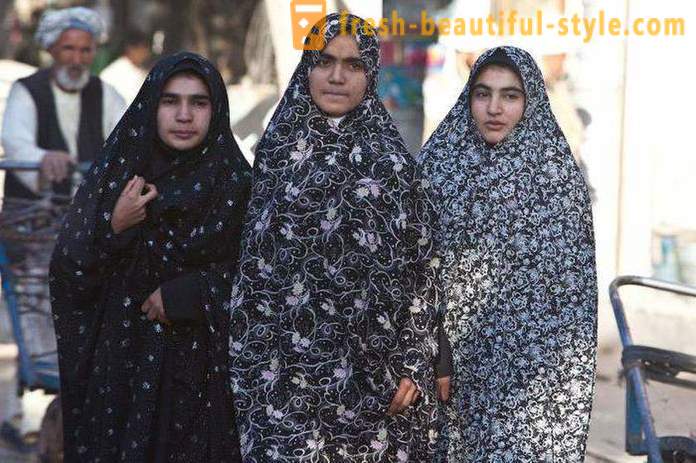
Rituals wear, taking off and putting on the veil were strictly zareglamentirovany local etiquette and all kinds of superstitions. The fact that such a veil and what are the treatment of her subtlety, the girls have known since childhood. For example, it was decided make a veil and chachvan from home on your hands when you exit and yard throw down. Chachvan fell on the face only at the gate.
According to ancient beliefs donning the burqa in the house led to the troubles brought on by its inhabitants. According to the rules of etiquette which became courtyard guest immediately threw off chachvan, but did not remove the burqa - is entrusted to the hostess. Also, the hostess or her daughter throws a veil on a woman leaving.
Innovation and change
As with any clothes, the veil was especially on which it was possible to determine the age and social status housewife reflected in length, coloring and quality fabrics. Part of parts wear magical meaning. Embroidery usually captures the essence of folk beliefs. Purpose ornaments were protected from the evil eye and evil forces to drive away evil spirits.
For centuries, the veil cut virtually unchanged. Innovations have touched only ornament, as well as length. Originally, the veil reached to his ankles, but then began to be sewn shorter - just below the knee. From under the edges of her dress could be seen or trousers.
Shorten and false sleeves. Initially, they were almost dragging his owner on the ground, then began to reach the level of the hem, and then became even shorter. In pre-revolutionary times burqa compulsory worn by women of all ages. Girl was considered in Islam has reached the maturity to 9 years. The first children's burqa were made of cheap fabrics since wearing them had only a few years.












































